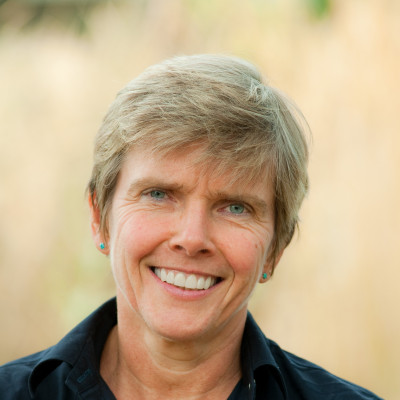News
Stay up-to-date with what's happening in EOAS
Philippe Tortell elected to The College of New Scholars, Artists and Scientists of the Royal Society of Canada
Congratulations to Professor Philippe Tortell, who was elected to the Royal Society of Canada's College of New Scholars, Artists and Scientists. The college is Canada’s first national system of multidisciplinary recognition for the emerging generation of Canadian intellectual leadership.
The Members of the College are Canadians and Permanent Residents who have demonstrated a high level of achievement early stage in their career. The criteria for election is excellence, and membership is for seven years. Up to 100 Members may be elected each year.
Philippe is a sea-going oceanographer studying the biological, chemical and physical factors that regulate oceanic primary productivity and the concentration of climate-active gases. He and his group have developed innovative methods to characterize dissolved gases in the oceans in real time at high resolution. He was appointed Director of the Peter Wall Institute this year.
Professor Dominique Weis elected as Fellow of the Royal Society of Canada
Congratulations to Professor Dominique Weis on her election as Fellow of the Royal Society of Canada! Dominique's election to the RSC's Academy of Science honours her research on the chemistry and isotopic signature of Earth's mantle that has shaped our understanding of the world's large igneous provinces, mantle plumes, and volcanic arcs. Her work has revealed connections between terrestrial magmatism and mantle processes across many depths and scales. Dominique's often interdisciplinary work has also pioneered the use of isotopes to trace the origin and fate of metals in the environment.
Dominique and 88 other Fellows will be inducted on Friday, November 18, 2016 at the Isabel Bader Centre in Kingston, Ontario.
Welcome to the new EOAS website
The Public and Internal Relations Committee (PIRC) and the Computer Staff of EOAS are pleased unveil to you our new EOAS website. The website features a new look and feel, a mobile-friendly, clearer academic program information, a restructured research section, enhanced news & event feeds, and much more.
All EOAS department who have migrated via the myEOAS migrate tool can log in and test the web's features by using the login link in the upper right or navigating directly to www.eoas.ubc.ca/user. Department members can request help with content and technical issues by e-mailing helpdesk@eoas.ubc.ca
Your feedback helps us improve the experience we offer. Please provide any feedback you have on our web feedback form.
Catherine Johnson lends expertise to asteroid sampling mission OSIRIS-REx
UBC planetary geophysicist Catherine Johnson is watching today’s launch of NASA's OSIRIS-Rex mission with more than a passing interest.
The Canadian Space Agency’s contribution to the mission is the OSIRIS-Rex Laser Altimeter (OLA), an instrument designed to map the shape of the asteroid Bennu. Johnson is deputy instrument scientist for OLA, assisted by UBC Earth, Ocean and Atmospheric Sciences colleagues Lydia Philpott and Manar Al Asad.
“OLA will map the asteroid shape in unprecedented detail, down to a resolution of a few centimeters,” says Johnson. “This is a first for asteroid studies and will provide insights into the interior structure and origin of the asteroid, as well as help OSIRIS-REx successfully return a sample from the surface.”
Johnson will collaborate with an international science team on OLA, including lead instrument scientist Michael Daly at York University and colleagues at the University of Calgary, Johns Hopkins University Applied Physics Laboratory, Lockheed Martin Space Systems, MacDonald, Dettwiler and Associates, and Optech.
OSIRIS-REx will map and subsequently sample Bennu. The carbonaceous asteroid is leftover material from our protoplanetary disk, the cloud of gas and dust leftover from the Sun’s formation that collapsed to form the Solar System. The asteroid’s material remains relatively untouched since that event 4.5 billion years ago. Scientists intend to use samples of the asteroid to better understand the origins of our Solar System and the chemical precursors to life on Earth.
As it approaches Bennu in August of 2018, it will use a set of precise thrusters to match the asteroid’s orbit around the sun. OSIRIS-REx will map Bennu’s shape, topography and surface features for over a year. OLA collects data by emitting laser pulses and timing how long the light takes to return to its sensors after reflecting off the asteroid’s surfaces.
The topographic information collected by OLA, together with other physical and chemical data collected from OSIRIS-Rex’s four other imaging instruments, will be used to select a location on the asteroid from which to sample material. In a delicate maneuver, OSIRIS-REx will extend an arm to touch the asteroid’s surface, collecting at least 60 g of material in a few seconds of contact. OSIRIX-REx will return home with the sample to Earth in 2023.
Related Links
Doug Oldenburg has been elected to fellowship in the Royal Society of Canada
The citation from the RSC website reads: OLDENBURG, Douglas W. - Department of Earth, Ocean and Atmospheric Sciences, The University of British Columbia Douglas W. Oldenburg is the world's leading developer of geophysical inversion methods and software for quantitative interpretation of geophysical data acquired by the mineral industry and others to explore Earth's shallow subsurface. The research by him and his co-workers has set the standard by which all similar developments are judged. His software is used by hundreds of scientists in industry and academia.
2013 John A. Franklin Award - Erik Eberhardt
Bi-annual award by the Canadian Geotechnical Society recognizing an individual who has made outstanding technical contributions in the fields of rock mechanics or rock engineering applied to civil, mining or petroleum engineering in Canada and/or internationally.



